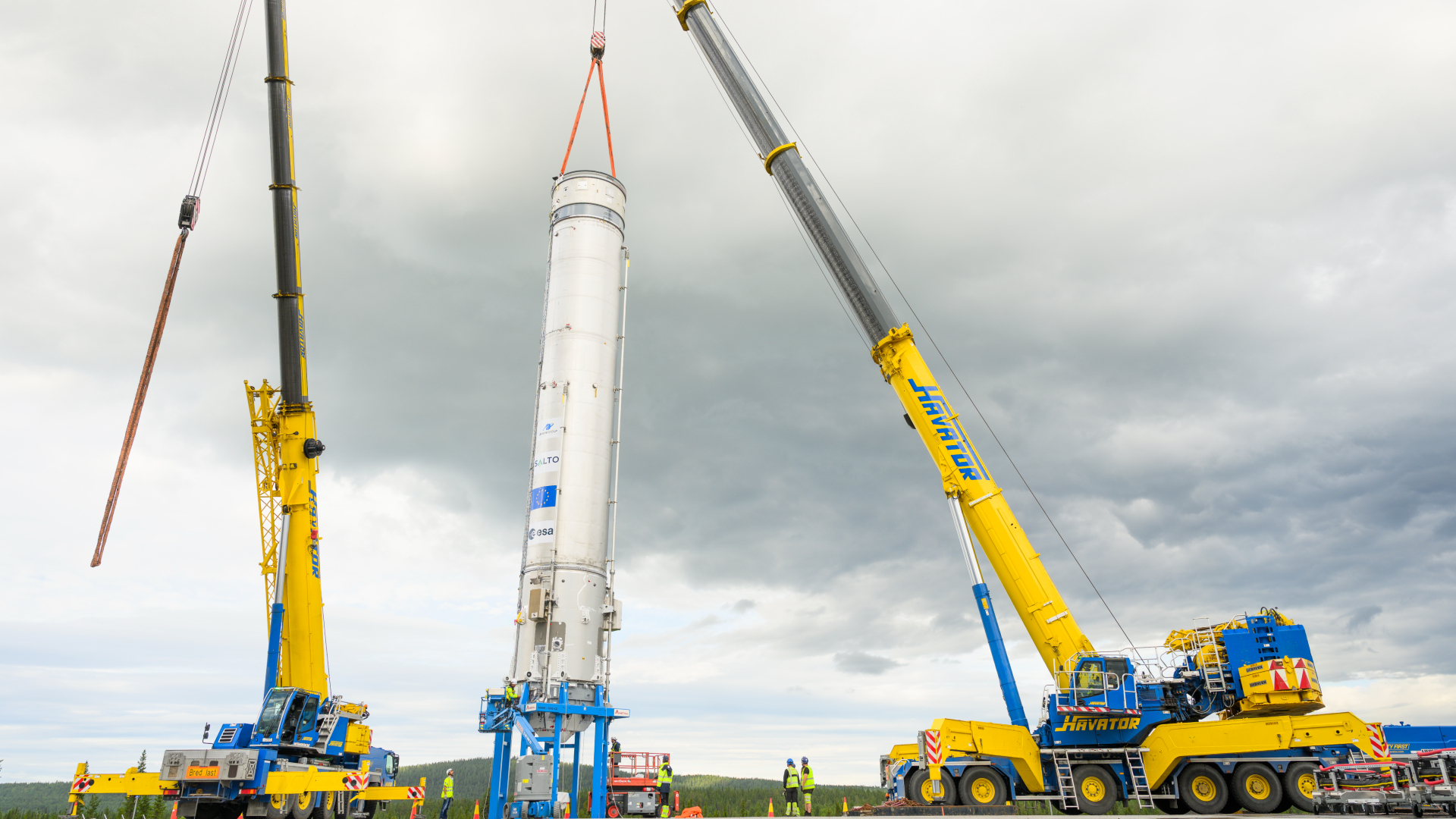Rubble-pile asteroids are 'giant space cushions' that live forever
"In short, we found that Itokawa is like a giant space cushion, and very hard to destroy."

A diamond is forever? Tell that to a rubble-pile asteroid.
The asteroid Itokawa is a pile of rocky debris 1,640 feet (500 meters) long. Some call it peanut-shaped; Others say it resembles a sea otter, complete with a head, neck and body. Whatever Itokawa may look like, new research suggests that it has remained pristinely intact — despite incessant asteroid bombardment in the inner solar system — since it formed more than 4.2 billion years ago. The finding may be crucial for any future mission designed to protect Earth from a rubble-pile asteroid, the researchers argue.
"In short, we found that Itokawa is like a giant space cushion, and very hard to destroy," Fred Jourdan, an astronomer at Curtin University in Australia and the lead author of the new paper, said in a statement.
Related: The greatest asteroid missions of all time!
The team calculated Itokawa's age using specks of asteroid dust that were scooped by the Japanese Hayabusa spacecraft and brought back to Earth in 2010. By analyzing the dust particles, Jourdan's team found that Itokawa is almost as old as the solar system itself. In the new paper, the team explains how Itokawa has survived countless asteroid collisions over 4.2 billion long years.
Although researchers already knew that a catastrophic collision destroyed Itokawa's parent body, this is the first time that Itokawa's precise age and resilience have been directly studied.
A "giant space cushion"
The team behind the new research studied the texture and composition of three tiny dust particles collected from Itokawa's surface. The scientists used a radioactive dating method called argon-argon dating to measure Itokawa's age, which they clocked at 4.2 billion years.
Breaking space news, the latest updates on rocket launches, skywatching events and more!
As part of the study, the team also measured how much the dust particles, and by extension Itokawa, had been affected by shocks from asteroid collisions. For this, the researchers used another method called electron backscatter diffraction to measure the structures and orientations of crystals embedded inside the dust particles.
The team found that the dust particles were mostly pristine, suggesting that they were excavated from deep within the parent asteroid, likely when it broke apart during the catastrophic collision. The scientists concluded that Itokawa is extremely resilient to collisions, thanks to the asteroid's highly porous nature.
As an amalgamation of remnants from asteroid collisions, Itokata hosts boulders of different shapes and sizes that have blended under gravity. The rubble pile is "entirely made of loose boulders and rocks, with almost half of it being empty space," Jourdan said in the statement.
When asteroids impact Itokawa, large cavities or pores between these boulders absorb much of the resulting energy surge, protecting the asteroid's structure from fractures. In this way, the pores help rubble piles like Itokawa survive asteroid collisions for at least 10 times longer than conventional, single-body asteroids, also known as monoliths, the researchers found.
The case for deflecting rubble-pile asteroids
The new research will help planetary defense experts, who discover near-Earth asteroids, track their paths and determine whether any threaten to collide with Earth.
The scientists say their analysis of Itokawa suggests that thanks to their resilience in the face of impacts, rubble-pile asteroids may be more common, both in the asteroid belt and near-Earth, than previously expected.
"There is more chance that if a big asteroid is hurtling toward Earth, it will be a rubble pile," Nick Timms, also an astronomer at Curtin University, said in the same statement.
And the structure of an asteroid may make a difference if humans need to choose a strategy for deflecting a threat. For example, NASA's Double Asteroid Redirection Test (DART) mission rammed into Dimorphos, a similar rubble pile that was not on a collision course with Earth, but that was a convenient target to test how humans might respond to a future threatening asteroid. The impact shortened Dimorphos' orbit around the larger asteroid Didymos by 33 minutes, a major success for the mission.
When it collided with Dimorphos, DART transferred its energy and momentum to the asteroid. Although this method, called kinetic impact, was successful with DART, the authors of the new study warn it may be less efficient at deflecting shock-absorbent porous asteroids.
The kinetic impactor method is also most effective when we spot asteroids on collision courses with Earth well in advance, leaving enough time for a small change in orbit to build up. If a threatening asteroid is spotted too late for the kinetic impactor approach, "we can then potentially use a more aggressive approach like using the shockwave of a close-by nuclear blast to push a rubble-pile asteroid off course without destroying it," Timms said.
The research is described in a paper published Monday (Jan. 23) in the journal Proceedings of the National Academy of Sciences (PNAS).
Follow Sharmila Kuthunur on Twitter @Sharmilakg. Follow us on Twitter @Spacedotcom and on Facebook.
Join our Space Forums to keep talking space on the latest missions, night sky and more! And if you have a news tip, correction or comment, let us know at: community@space.com.

Sharmila Kuthunur is an independent space journalist based in Bengaluru, India. Her work has also appeared in Scientific American, Science, Astronomy and Live Science, among other publications. She holds a master's degree in journalism from Northeastern University in Boston.
